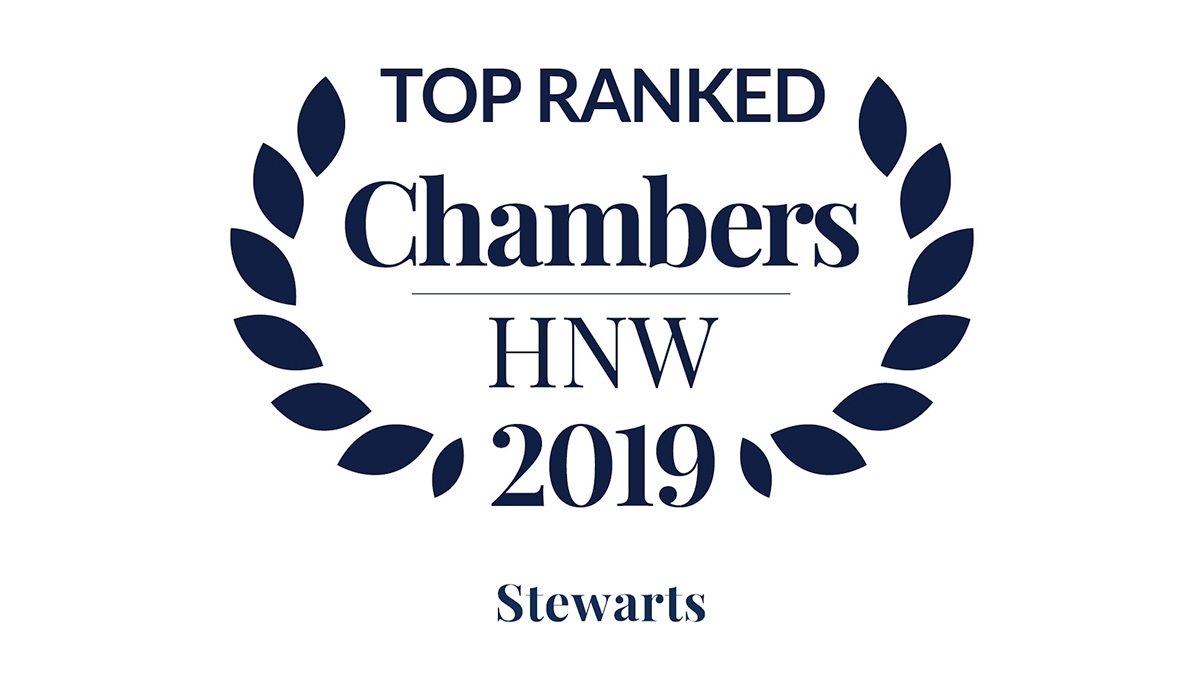James Price, Emma Holland and Luca del Panta write an introduction for this year’s Chambers High Net Worth guide about the current landscape in trust and probate litigation.
According to The Society of Trust and Estate Practitioners (STEP), more than 100,000 HNW individuals changed residence from their home countries in 2018 (an increase of over 10% from the year before). It is therefore unsurprising that conflict of laws issues feature heavily in today’s trust litigation, with jurisdiction challenges increasingly common. The long-running and large-scale Crociani litigation is a well-known example, but even less obviously contentious proceedings such as blessing applications may involve extensive jurisdiction disputes before the substantive application is heard: the E Trust case in Jersey and Bermuda was such an example.
As a result of different approaches to family wealth amongst new generations of beneficiaries, trust structures are increasingly being reorganised. Trustees seeking to carry out a restructuring have recourse in most jurisdictions to two types of statutory provisions, based on the English s.1 Variation of Trusts Act 1958 and s.57 Trustee Act 1925 (the “variation” and “administrative” provisions, respectively). The variation provisions can be used to vary any aspect of a trust including beneficial interests but require consent from adult beneficiaries and “benefit” for minor, unascertained and unborn beneficiaries. The administrative provisions have no such requirements, making the process simpler and more cost-effective, but can only be used for “management or administration” and any change to beneficial interests must be only “incidental”.
Different jurisdictions have developed their own approach to these. In Bermuda, for example, the “administrative” provision (s.47 Trustee Act 1975) is not restricted to management or administration and has been used in the Bermuda courts to effect changes to beneficial provisions without the consent requirements of the “variation” jurisdiction. This has led to an increasingly popular practice involving trustees in other jurisdictions such as Cayman changing their proper law to Bermuda in order to avail themselves of the s.47 procedure, the interpretation of which is as yet unchallenged.
The decision of HHJ Paul Matthews in Lewis v Tamplin underscored the limits of trustees’ right to withhold disclosure of documents from beneficiaries, clarifying that there is neither a “threshold of suspicion” nor a requirement for beneficiaries to act unanimously in making such requests. Further, it was clarified that the Londonderry principle – that trustees will not normally be required to reveal details relating to the exercise of their dispositive powers – will not apply to administrative functions. There is of course concern as to the ability to circumvent this principle by using the subject access request procedure under s.7 Data Protection Act 1998, including on UK-based solicitors of non-resident trustees, following the Court of Appeal’s decision in Dawson-Damer v Taylor Wessing LLP. By the time of publishing, the High Court will have given further guidance as to the limits of the practical effects of the procedure.
Despite – or perhaps because of – the huge rise in the number of trading and operating companies held by trusts, the so-called ‘anti-Bartlett’ clause is another trustee protection which appears to be under threat, with practitioners querying whether such clauses are outdated or even ‘dead’. Their limited effect was recently highlighted by the Hong Kong Court of Appeal in Zhang Hong Li v DBS Bank, where it was found that notwithstanding such a clause, a trustee has a duty to act prudently and with reasonable care and skill in approving investment transactions of an underlying company.
Trustees may take comfort from the Privy Council’s findings in Investec Trust (Guernsey) v Glenalla Properties that, under Jersey law, their personal assets are insulated from liabilities to third parties expressly incurred qua trustee and also that a liability only need be reasonable as at the time when it was incurred. Certain questions, however, remain outstanding, such as whether successor trustees’ rights to indemnification and remuneration rank before or after those of their predecessor trustees.
Trustees and personal representatives alike are generally well advised to remain neutral in litigation, particularly where there is a conflict of interest. To do otherwise runs the risk of personal cost implications, as highlighted by the case of Griffin v Higgs.
Despite having been described by a judge in 2000 as “not a subject too familiar to many of us,” proprietary estoppel has since become a staple of family property and inheritance disputes, with a steady increase in cases year on year. Although after Cobbe v Yeoman’s Row some heralded the death of proprietary estoppel, it was revivified by Thorner v Major and has now flourished to the point that no fewer than 12 reported cases in 2018 featured it as a major issue. Due in part to the increase in value of agricultural land and perhaps a tendency not to formalise agreements, many of these involve disputes between different generations of farming families and are widely reported in the press as ‘Cowshed Cinderella’ cases.
Claims under the Inheritance (Provision for Family and Dependants) Act 1975 being another staple of probate claims, there has been a recent focus on the circumstances in which a claimant should be allowed permission to bring a claim beyond the six-month time limit. In Sergeant, the Court refused such permission in respect of a claim which was a decade out of time but Mostyn J in Cowan v Foreman went further and unequivocally condemned the common practice of entering into standstill agreements. Only the following week Chief Master Marsh gave judgment in Bhusate v Patel, in which he gave permission for a 1975 Act claim to be brought almost 26 years out of time. Permission to appeal the decision in Cowan has now been granted; the result will be awaited anxiously by probate litigators.
Undue influence is seldom proved due to the high threshold required, even in cases where the presumption of undue influence arises as demonstrated in Brindley v Brindley. However, undue influence was found to invalidate both a will and lifetime gift of property in the recent case of Chin v Chin, showing that, whilst highly fact dependent, such claims can succeed. The case also touched on the familiar issues of mental capacity and want of knowledge and approval.
As is well established, the test for testamentary capacity differs from that for lifetime transactions, which is governed by the Mental Capacity Act 2005. Despite the fact that currently one person in six over the age of 80 has dementia and its prevalence is set to soar, there appears to be a lack of public appreciation of the need for powers of attorney to be in place to enable someone to take decisions on another’s behalf and indeed a lack of understanding among banks and other institutions as to their validity and effect, as highlighted by recent guidance from the Office of the Public Guardian (OPG).
The Court of Protection is frequently asked to address issues concerning powers of attorney, with recent examples involving issues ranging from the OPG guidance on payments for family care to whether it should be permitted to include instructions in a power of attorney which direct or encourage assisted suicide or euthanasia. Other questions recently considered include the test for capacity to marry and to enter into a prenuptial agreement.
Despite increased judicial scrutiny of the costs of litigation, disputes between HNWIs show no sign of decreasing. A welcome corollary of this is the opportunity it gives the courts to clarify the law in order to adapt it to developing societal trends and the changing circumstances of HNWIs.
This sponsored introduction first featured in Chambers High Net Worth in 2019, as the introduction to the Private Wealth Disputes chapter. It can be viewed here.
You can find further information regarding our expertise, experience and team on our Trust and Probate Litigation pages.
If you require assistance from our team, please contact us or request a call back from one of our lawyers by submitting this form.
Subscribe – In order to receive our news straight to your inbox, subscribe here. Our newsletters are sent no more than once a month.







